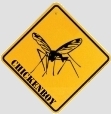BletchleyGeek
Posts: 4713
Joined: 11/26/2009
From: Living in the fair city of Melbourne, Australia
Status: offline

|
I just posted this on the forums of the upcoming Command naval wargame, where some people were lobbying for and 'affordable' price tag:
quote:
The regularity with the 'price discussion' arises never fails to surprise me. This guy lays out the discussion on solid rational basis
http://www.joshuakennon.com/video-games ... your-head/
His point regarding Zelda (or say, Harpoon II back in the day) stands. I spent the savings of my 1997 summer job into three magnificient wargames: TOAW, Harpoon II and Steel Panthers. Memory is foggy, but none of them costed me less than 60$. It was a massive investment for a teenager, but I never really regretted that. They kept me entertained for years. What would be the price of those if we adjusted for inflation? Running this data through this site here
http://www.usinflationcalculator.com/
it says those 60$ a piece would be 86$. Now let's look at Command and compare it with Harpoon II, feature-wise and content-wise. Does anybody here seriously think that the research and development work done by the Command team is any cheaper than those of the original Harpoon programmers?
Some in this thread have drawn a comparison with indie titles or basically the pricing scheme one usually sees in the Apple store. Why are those prices rational? Here's my take:
If one looks into the sales number of Apple store applications, it's striking to see that only a 10% of those applications sell more than 10,000 units. That pricing strategy is a bet at selling enormous numbers of units. The reality is that there are very few successes such as Angry Birds - with millions of units sold - and many games like the very fine Battle of The Bulge game by Shenandoah Studios, which will - with luck - sell anything over 10,000 units. Both Angry Birds and Bulge sell for 10$. From those 10 bucks, remove Apple's cut (about a 30%). That means the devs get 7$ per unit sold. If you sell several million units, you're rich. If you sell as few as 10,000 units, you're broke. Why did then Shenandoah Studios risk it? They didn't, since they first went through a crowd funding scheme which allowed them to mitigate the risk of low sales: any sale on the store is a "bonus" sale.
Given the realities of the above, there are three rational alternatives for somebody wanting to sell a game/app, ordered by the risk they entail (from less risky to more risky):
1) Drastically slash down development costs by hiring developers and artists in countries where the cost of living is much lower than that of the parts of the world you think the vast majority of people purchasing your thing will come. Just do some research and find out how many of these apps and games are actually developed in Bangladesh, Vietnam or Thailand.
2) Use crowd-funding to make sure you'll at least cover enough to not go broke and get a hold on the demographics of the people who might be interested in the stuff you're doing. This allows you also to create a 'community' around a 'brand' for free. Your customers/backers will become stakeholders in the success of your project, which usually can only help in increasing the reach of your product in the future and actual sales, since usually these backers will be receiving a 'free' copy of your product.
3) Sell each unit at a price that allows to get ahead of costs of living vs. expected number of sales curve.
The Command project has been accepting donations for a long time, but my impression is that they never relied on that to decide whether the project was viable or not (which is the reason why people put their projects on IndieGoGo or Kickstarter). They were doing it because they wanted to do it since they genuinely love the subject matter. No more, no less.
I've seen this discussion going on these forums again and again. It has always surprised me that I don't see any rational argument about why games - and specifically, computer war games - should be cheap.
_____________________________
|
 Printable Version
Printable Version



















 Really, how hard is to google to back up your "plain ole facts"
Really, how hard is to google to back up your "plain ole facts" 
 New Messages
New Messages No New Messages
No New Messages Hot Topic w/ New Messages
Hot Topic w/ New Messages Hot Topic w/o New Messages
Hot Topic w/o New Messages Locked w/ New Messages
Locked w/ New Messages Locked w/o New Messages
Locked w/o New Messages Post New Thread
Post New Thread